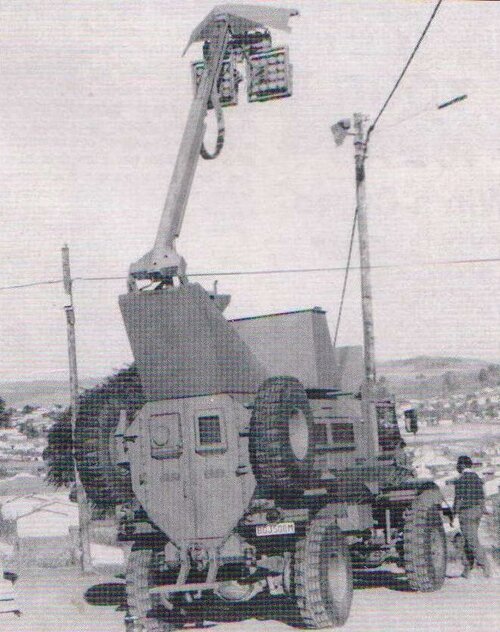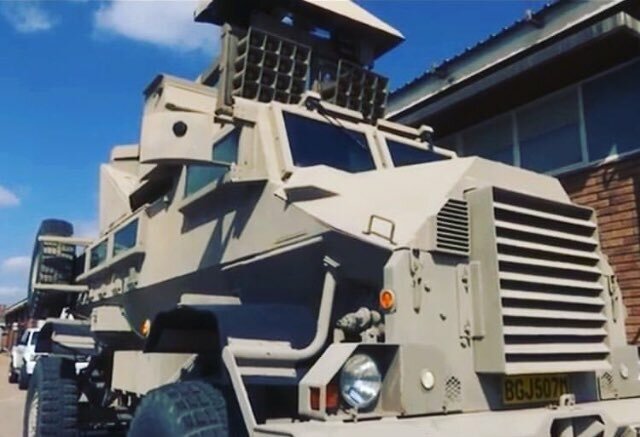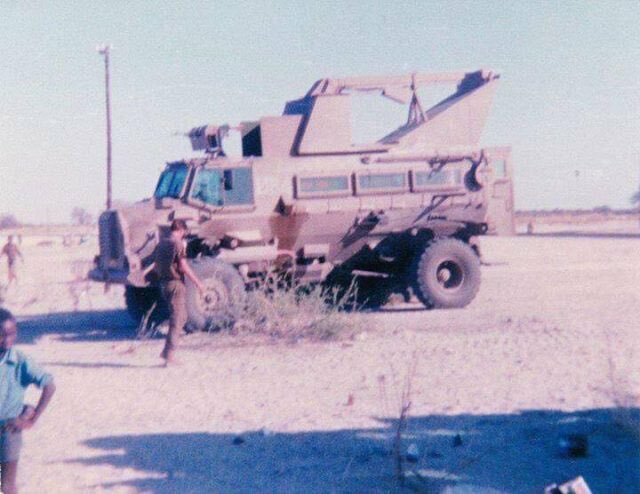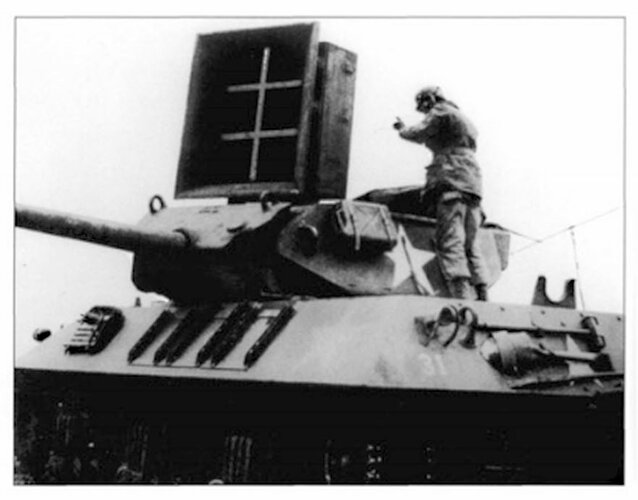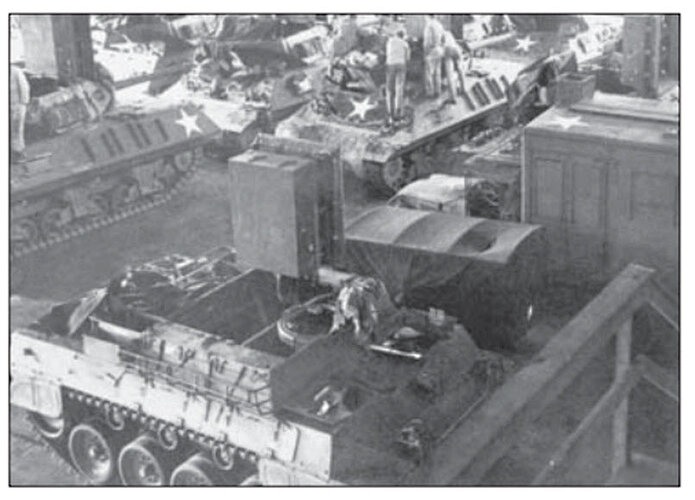Some relevant info from The Deceivers: Allied Military Deception in the Second World War, by Thaddeus Holt.
Sonic deception was given two overall codenames:
POPLIN - British
HEATER - American
It had no strategic value, only tactical value in trying to spoof the enemy into a different direction for example by fake tank noises, landing craft engine noises or bridge construction noises.
The British used sound film and the Americans used magnetic wire, the former gave greater fidelity and the latter greater volume. Both POPLIN and HEATER were small enough to mount on scout or armoured cars and in small landing craft. Lighter models were also used by paratroops.
The Americans used AIR HEATER in aircraft, codenamed POLLY as a PA system capable of transmitting from 2-5,000ft to the ground and normally used for voice messages.
GAS HEATER projected vehicle engine sounds by direct horn amplification from the exhaust.
WATER HEATER (aka CANARY HEAD) was a torpedo that went to a selected point, would then float until the pre-set time and then stick up the loudspeaker above the water to broadcast its sounds.
DUCK HEAD was the same as CANARY HEAD but transmitted radio broadcasts instead.
The Americans also developed BUNSEN BURNER which was a radio receiver and loudspeaker which could be parachute dropped and would operate for up to 4 hours broadcasting sounds or voice messages transmitted to it, then it would self-destruct.
It was found that HF sound waves were absorbed by air and LF tended to mask easily and weather affected things too. Experience showed it was better to synthesise characteristic sound elements rather than trying to accurately reproduce sounds.
Beyond loudspeakers were the simulated weapons firing; paper noise bombs that produced sound and flash, the British PARAFLEX parachute-dropped rifle and grenade simulators. The idea was to mix PARAFLEX with dummy parachutists, PINTAIL and BUNSEN BURNERs to create a mini platoon-sized dummy force that could last from 1-6 hours.
Similar rifle and grenade simulators in Burma designed by Major Andre Burcat were codenamed BURCAT SAUSAGES, BURCAT STRIPS and BURCAT CRACKERS.
The British 'A' Force first tried sonic deception to try and dislodge Major Bach's forces holding the Halfaya Pass following the German withdrawal after Operation Crusader in December 1941. Lt R.A. Bromley-Davenport was given the task and went on to devise the early sonic deception kit. An Egyptian film studio recorded tank sounds and these were played through propaganda speakers on Christmas Eve night in an attempt to draw Bach's defences against another sector. The attack on Christmas Day failed but 'A' Force stuck with sonic deception.
Following this, 'A' Force created a force of 3 armoured cars fitted with sonic deception equipment.
SONIA was the prototype, completed in June 1942. Initially permission to use it had to be obtained from London but Auchinlek managed to get permission to use it during the defence of the Nile Delta. It was also used during the opening attack at El Alamein with success, convincing some German defenders that an Allied infantry attack had tank support and once it was called on to call a German unit to surrender. The British 'A' Force first tried sonic deception to try and dislodge Major Bach's forces holding the Halfaya Pass following the German withdrawal after Operation Crusader in December 1941. An Egyptian film studio recorded tank sounds and these were played through propaganda speakers on Christmas Eve night in an attempt to draw Bach's defences against another sector. The attack on Christmas Day failed but 'A' Force stuck with sonic deception.
ORA was the second car, completed in November 1942. The equipment intended for ORA was used aboard an MTB during the night of 23/24 October 1942 to fake an amphibious assault against Baggush on the North African coast by broadcasting winch sounds and anchors being dropped and weighed. No result was detected.
There was a third car too but the retreat of Rommel saw no use for the cars until 1944 in Italy (two Light Scout Car Companies with POPLIN fitted cars and a Light Car Field Park which was a larger unit), with little success due to terrain and with so much real military traffic on a narrow front they had no real role.
'D' Force in Burma in December 1943 also received two Light Scout Car Companies and a Light Car Field Park.
In the US, the USN put Douglas Fairbanks to work on sonic deception paired with Prof. Harold Burns-Meyer who was a pioneer of stereophonic sound reproduction. At first they looked at ear-splitting sounds and "sonic bombs" before settling on sonic deception. They tested their kit off Sandy Hook on 27 October 1942 at night with success during a training exercise. This work led to the 'Beach Jumpers' who were sent to the Med for Husky.
The US Army in 1944 raised the 23rd Headquarters Special Troops, a unit to simulate a corps of one armoured and two infantry divisions. Part of this unit was the 3132nd Signal Service Company (Special) for sonic deception to simulate the sounds of the armoured division. They were given AT and AA protection and went into Normandy in July 1944.
The US Army also raised the 3133rd and 3134th and operated Army Experimental Station at Pine Camp, NY, for training and developing sonic deception. The 3133rd were earmarked for the Pacific but ended up in Italy in March 1945 and was used successfully a couple of times before the end of the war.

